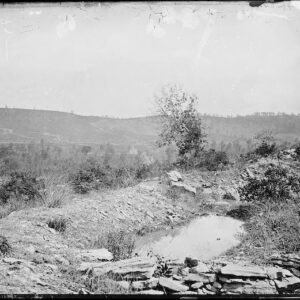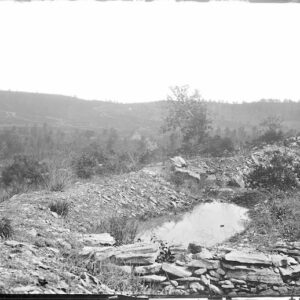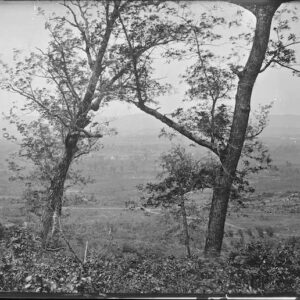Tag: Orchard Knob TN
Wikipedia says: On November 23, [1863], the Union army observed columns of Cleburne’s and Buckner’s men marching away from Missionary Ridge and also heard claims from Confederate deserters that the entire army was falling back. Grant became concerned that Bragg was massively reinforcing Longstreet and sought to disrupt the movement. Thomas ordered his division under Brig. Gen. Thomas J. Wood to advance in a reconnaissance in force, instructing him to avoid an engagement with the enemy and return to his fortifications when the strength of the Confederate line was revealed. Wood’s men assembled outside of their entrenchments and observed their objective approximately 2,000 yards to the east, a small knoll 100 feet high known as Orchard Knob (also known as Indian Hill). Maj. Gen. Philip Sheridan’s division lined up similarly to protect Wood’s right flank, and Howard’s XI Corps extended the line to the left, presenting over 20,000 soldiers arrayed in almost parade-ground alignment.
At 1:30 p.m., 14,000 Union soldiers moved forward at the double quick, sweeping across the plain, stunning the 600 Confederate defenders, who were able to fire only a single volley before they were overrun. Casualties were relatively small on both sides. Grant and Thomas decided to order the men to hold their position and entrench, rather than following the original orders to withdraw. Orchard Knob became Grant’s and Thomas’s headquarters for the remainder of the battles.
Bragg quickly readjusted his strategy, recalling all units that were within a day’s march. Cleburne’s division returned after dark from Chickamauga Station, interrupting the process of boarding the trains to Knoxville. Bragg began to reduce the strength on his left by withdrawing Maj. Gen. William H. T. Walker’s division from the base of Lookout Mountain and placing them on the far right of Missionary Ridge, just south of Tunnel Hill. He assigned Hardee to command his now critical right flank, turning over the left flank to Carter Stevenson. In the center, Breckinridge ordered his men to begin fortifying the crest of Missionary Ridge, a task that Bragg had somehow neglected for weeks. Unable to decide whether to defend the base or the crest of the Ridge, the divisions of Brig. Gens. William B. Bate and Patton Anderson were ordered to move half of their divisions to the crest, leaving the remainder in the rifle pits along the base. James L. McDonough wrote of the upper entrenchments, “Placed along the physical crest rather than what is termed the military crest … these works severely handicapped the defenders.”
The Union side also changed plans. Sherman had three divisions ready to cross the Tennessee, but the pontoon bridge at Brown’s Ferry had torn apart and Brig. Gen. Peter J. Osterhaus’s division was stranded in Lookout Valley. After receiving assurances from Sherman that he could proceed with three divisions, Grant decided to revive the previously rejected plan for an attack on Lookout Mountain and reassigned Osterhaus to Hooker’s command.


